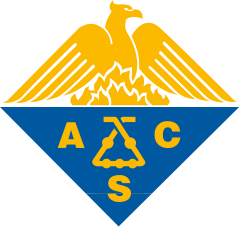Protein Structure Prediction: Conventional and Deep Learning Perspectives
Publication type: Journal Article
Publication date: 2021-05-28
scimago Q3
wos Q4
SJR: 0.458
CiteScore: 3.6
Impact factor: 1.4
ISSN: 15723887, 18758355
PubMed ID:
34050498
Organic Chemistry
Biochemistry
Analytical Chemistry
Bioengineering
Abstract
Protein structure prediction is a way to bridge the sequence-structure gap, one of the main challenges in computational biology and chemistry. Predicting any protein's accurate structure is of paramount importance for the scientific community, as these structures govern their function. Moreover, this is one of the complicated optimization problems that computational biologists have ever faced. Experimental protein structure determination methods include X-ray crystallography, Nuclear Magnetic Resonance Spectroscopy and Electron Microscopy. All of these are tedious and time-consuming procedures that require expertise. To make the process less cumbersome, scientists use predictive tools as part of computational methods, using data consolidated in the protein repositories. In recent years, machine learning approaches have raised the interest of the structure prediction community. Most of the machine learning approaches for protein structure prediction are centred on co-evolution based methods. The accuracy of these approaches depends on the number of homologous protein sequences available in the databases. The prediction problem becomes challenging for many proteins, especially those without enough sequence homologs. Deep learning methods allow for the extraction of intricate features from protein sequence data without making any intuitions. Accurately predicted protein structures are employed for drug discovery, antibody designs, understanding protein–protein interactions, and interactions with other molecules. This article provides a review of conventional and deep learning approaches in protein structure prediction. We conclude this review by outlining a few publicly available datasets and deep learning architectures currently employed for protein structure prediction tasks.
Found
Nothing found, try to update filter.
Found
Nothing found, try to update filter.
Top-30
Journals
|
1
2
3
4
5
|
|
|
International Journal of Molecular Sciences
5 publications, 7.04%
|
|
|
Journal of Chemical Information and Modeling
5 publications, 7.04%
|
|
|
Journal of Molecular Modeling
2 publications, 2.82%
|
|
|
Multimedia Tools and Applications
2 publications, 2.82%
|
|
|
Computers in Biology and Medicine
2 publications, 2.82%
|
|
|
mAbs
1 publication, 1.41%
|
|
|
Journal of Computational Biophysics and Chemistry
1 publication, 1.41%
|
|
|
Signal Transduction and Targeted Therapy
1 publication, 1.41%
|
|
|
Molecules
1 publication, 1.41%
|
|
|
Food Chemistry Molecular Sciences
1 publication, 1.41%
|
|
|
Open Life Sciences
1 publication, 1.41%
|
|
|
Methods
1 publication, 1.41%
|
|
|
Methods in Enzymology
1 publication, 1.41%
|
|
|
Current Protein and Peptide Science
1 publication, 1.41%
|
|
|
Current Atherosclerosis Reports
1 publication, 1.41%
|
|
|
Current Medicinal Chemistry
1 publication, 1.41%
|
|
|
Lecture Notes in Networks and Systems
1 publication, 1.41%
|
|
|
Lecture Notes in Computer Science
1 publication, 1.41%
|
|
|
Russian Chemical Reviews
1 publication, 1.41%
|
|
|
Microorganisms for Sustainability
1 publication, 1.41%
|
|
|
Medicine Plus
1 publication, 1.41%
|
|
|
Journal of Chemical Theory and Computation
1 publication, 1.41%
|
|
|
Journal of Computational Biology
1 publication, 1.41%
|
|
|
FEBS Open Bio
1 publication, 1.41%
|
|
|
MedComm – Future Medicine
1 publication, 1.41%
|
|
|
Frontiers in Genetics
1 publication, 1.41%
|
|
|
International Journal of Biological Macromolecules
1 publication, 1.41%
|
|
|
Communications Biology
1 publication, 1.41%
|
|
|
Endocrine, Metabolic and Immune Disorders - Drug Targets
1 publication, 1.41%
|
|
|
1
2
3
4
5
|
Publishers
|
2
4
6
8
10
12
14
16
18
|
|
|
Springer Nature
17 publications, 23.94%
|
|
|
Elsevier
16 publications, 22.54%
|
|
|
MDPI
10 publications, 14.08%
|
|
|
American Chemical Society (ACS)
6 publications, 8.45%
|
|
|
Bentham Science Publishers Ltd.
5 publications, 7.04%
|
|
|
Wiley
4 publications, 5.63%
|
|
|
Cold Spring Harbor Laboratory
3 publications, 4.23%
|
|
|
Institute of Electrical and Electronics Engineers (IEEE)
2 publications, 2.82%
|
|
|
Taylor & Francis
1 publication, 1.41%
|
|
|
World Scientific
1 publication, 1.41%
|
|
|
Walter de Gruyter
1 publication, 1.41%
|
|
|
Autonomous Non-profit Organization Editorial Board of the journal Uspekhi Khimii
1 publication, 1.41%
|
|
|
Mary Ann Liebert
1 publication, 1.41%
|
|
|
Frontiers Media S.A.
1 publication, 1.41%
|
|
|
PeerJ
1 publication, 1.41%
|
|
|
2
4
6
8
10
12
14
16
18
|
- We do not take into account publications without a DOI.
- Statistics recalculated weekly.
Are you a researcher?
Create a profile to get free access to personal recommendations for colleagues and new articles.
Metrics
71
Total citations:
71
Citations from 2024:
43
(60%)
Cite this
GOST |
RIS |
BibTex |
MLA
Cite this
GOST
Copy
Jisna V. A., Jayaraj P. B. Protein Structure Prediction: Conventional and Deep Learning Perspectives // Protein Journal. 2021. Vol. 40. No. 4. pp. 522-544.
GOST all authors (up to 50)
Copy
Jisna V. A., Jayaraj P. B. Protein Structure Prediction: Conventional and Deep Learning Perspectives // Protein Journal. 2021. Vol. 40. No. 4. pp. 522-544.
Cite this
RIS
Copy
TY - JOUR
DO - 10.1007/s10930-021-10003-y
UR - https://doi.org/10.1007/s10930-021-10003-y
TI - Protein Structure Prediction: Conventional and Deep Learning Perspectives
T2 - Protein Journal
AU - Jisna, V A
AU - Jayaraj, P. B.
PY - 2021
DA - 2021/05/28
PB - Springer Nature
SP - 522-544
IS - 4
VL - 40
PMID - 34050498
SN - 1572-3887
SN - 1875-8355
ER -
Cite this
BibTex (up to 50 authors)
Copy
@article{2021_Jisna,
author = {V A Jisna and P. B. Jayaraj},
title = {Protein Structure Prediction: Conventional and Deep Learning Perspectives},
journal = {Protein Journal},
year = {2021},
volume = {40},
publisher = {Springer Nature},
month = {may},
url = {https://doi.org/10.1007/s10930-021-10003-y},
number = {4},
pages = {522--544},
doi = {10.1007/s10930-021-10003-y}
}
Cite this
MLA
Copy
Jisna, V. A., and P. B. Jayaraj. “Protein Structure Prediction: Conventional and Deep Learning Perspectives.” Protein Journal, vol. 40, no. 4, May. 2021, pp. 522-544. https://doi.org/10.1007/s10930-021-10003-y.




















